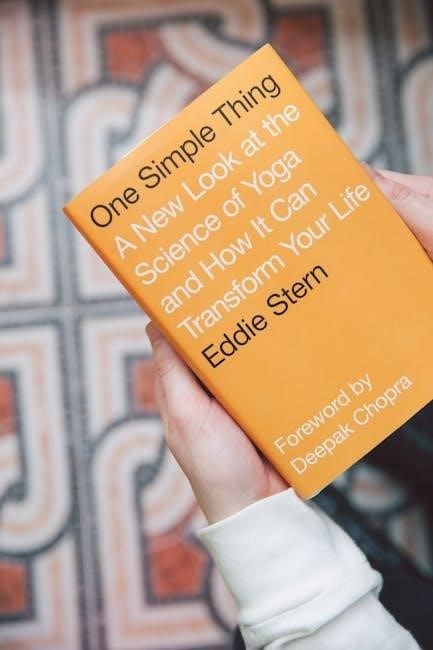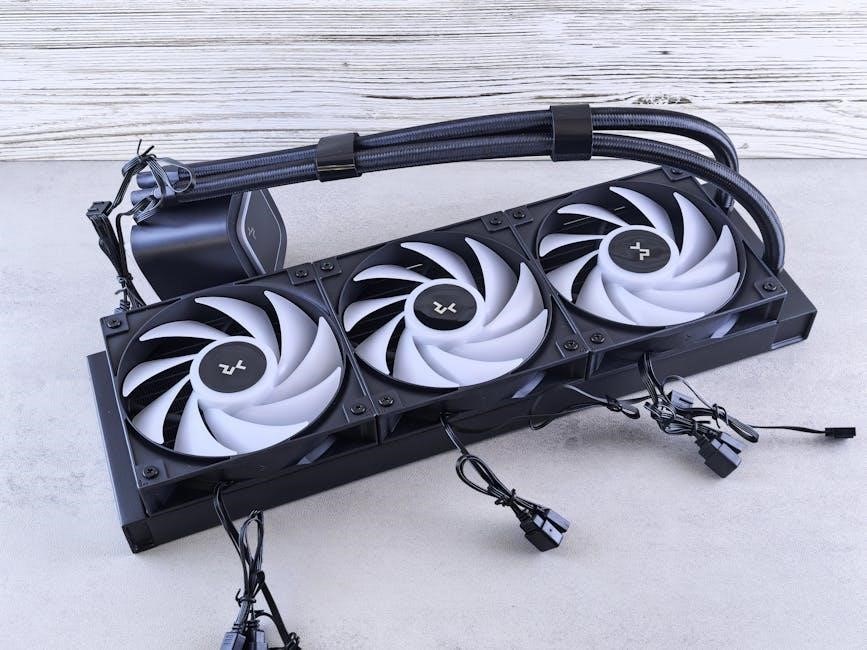Cataclysm Classic Shadow Priests offer a unique blend of damage-over-time spells and filler abilities, making them a scaling powerhouse in later phases despite a slow early start.
Overview of Shadow Priest in Cataclysm Classic
Shadow Priests in Cataclysm Classic are a formidable DPS class that excels at dealing damage-over-time while managing filler spells. While their performance may feel underwhelming in early phases, they scale exceptionally well, becoming top-tier in later content. The gameplay remains largely unchanged from previous expansions, focusing on maintaining DoTs and optimizing downtime. Their rotation revolves around Mind Flay, Shadow Word: Pain, and Vampiric Touch, making them a consistent and versatile choice for PvE content.
Key Changes from Previous Expansions
Cataclysm Classic brought minimal changes to Shadow Priest core gameplay, maintaining the familiar damage-over-time focus. However, the introduction of Mastery and Haste as key stats shifted optimization strategies. While the fundamental rotation remained unchanged, slight adjustments to spell coefficients and talents refined the class. Shadow Priests also experienced scaling improvements, starting weaker in early phases but excelling in later content, making them a long-term investment for raid teams.
Races for Shadow Priest in Cataclysm Classic
Your race choice impacts gameplay through unique abilities, enhancing either PvE or PvP performance, with certain races offering distinct advantages for Shadow Priests.
Best Races for Alliance Shadow Priests
Draenei are optimal for Alliance Shadow Priests due to their intellect bonus and “Healing Focus,” reducing spell interruptions. Humans offer stamina and “Every Man for Himself,” beneficial for both PvE and PvP. Dwarves provide “Stoneform,” useful against diseases and poisons, while Night Elves’ “Shadowmeld” aids in PvP ambushes. Each race brings unique benefits, with Draenei and Humans being top choices for PvE, and Night Elves excelling in PvP scenarios.
Best Races for Horde Shadow Priests
Blood Elves are the top choice for Horde Shadow Priests due to their Arcane Torrent, which provides mana regeneration and spell interruption. Tauren’s War Stomp offers crowd control and stun effects, beneficial in both PvE and PvP. Undead Priests gain Will of the Necropolis, enhancing survival, while Trolls’ Berserking increases casting speed for improved DPS. Blood Elves remain the optimal race for PvE due to their exceptional mana efficiency and versatility in raids and dungeons.

Professions for Shadow Priest
Tailoring and Enchanting are ideal professions for Shadow Priests. Tailoring provides the Robe of the Void, a powerful pre-raid item. Enchanting allows self-enchanting gear, boosting DPS.
Best Professions for Shadow Priest DPS
Tailoring and Enchanting are the top professions for Shadow Priest DPS. Tailoring unlocks the Robe of the Void, a powerful pre-raid chestpiece. Enchanting allows you to enchant your gear with Abyssal Precision, reducing spell pushback. Alchemy is another strong choice, providing access to Flask of the Draconic Mind for increased Intellect. These professions enhance your DPS output and prepare you for raiding content effectively in Cataclysm Classic.
Profession-Specific Benefits for Shadow Priests
Professions like Tailoring provide the Robe of the Void, a powerful early-game item. Enchanting grants Abyssal Precision, reducing spell pushback. Alchemy offers Flask of the Draconic Mind for Intellect boosts. Blacksmithing and Jewelcrafting also benefit Shadow Priests by allowing extra gem sockets and better stat optimization. These profession perks enhance your character’s performance, making them valuable investments for maximizing DPS in Cataclysm Classic.

Talents and Builds for Shadow Priest
Talents and builds for Shadow Priests focus on maximizing damage output and mana efficiency. Key talents enhance intellect, critical strike chance, and spell damage, synergizing for optimal DPS.
Optimal Talent Build for PvE Shadow Priest
The optimal PvE Shadow Priest build focuses on maximizing damage output while maintaining mana efficiency. Start with 41 points in Shadow, including Spirit Tap, Blackout, and Shadow Affinity. Next, allocate 20 points in Discipline for Empowered Healing and Divine Spirit. Finally, invest 10 points in Holy for Darkness, enhancing spell haste. This build ensures high DPS, strong mana regeneration, and improved group support, making it ideal for raiding and dungeons in Cataclysm Classic.
Key Talents for Maximizing DPS
For maximizing DPS, focus on talents that enhance spell damage and reduce cooldowns. Spirit Tap and Shadow Affinity boost damage output, while Empowered Shadow increases periodic damage. Siphon Life provides additional damage and healing. Silence and Improved Psychic Scream offer crowd control and burst potential. These talents synergize to create a powerful, high-damage rotation, making them essential for optimal Shadow Priest performance in PvE content.

Glyphs for Shadow Priest
Glyphs enhance Shadow Priest abilities, improving damage output and survivability. They are crucial for maximizing performance in both PvE and PvP scenarios, offering significant gameplay benefits.
Major Glyphs for Shadow Priest DPS
Major glyphs like Glyph of Shadow Word: Pain and Glyph of Mind Flay are essential for maximizing DPS. These glyphs enhance core abilities, increasing damage output and improving spell efficiency. Glyph of Power Word: Shield also provides survivability, indirectly supporting DPS by reducing downtime. Choosing the right combination ensures optimal performance in raids and dungeons, aligning with the Shadow Priest’s damage-over-time focused playstyle in Cataclysm Classic.
Minor Glyphs for Shadow Priest DPS
Minor glyphs like Glyph of Fade reduce the cooldown of Fade, aiding threat management. Glyph of Levitate provides convenience for positioning. Glyph of Power Word: Fortitude increases movement speed for buffed allies. While these glyphs don’t directly boost DPS, they enhance quality of life and utility, making them valuable for optimizing performance in various PvE and PvP scenarios in Cataclysm Classic.

Rotation and Spell Priority for Shadow Priest
- Mind Flay is your primary nuke, dealing instant shadow damage and generating shadow orbs.
- Use Shadow Word: Death for execute damage on targets below 20% health.
- Apply and maintain Vampiric Touch for mana return and increased damage.
Basic Rotation for Shadow Priest DPS
The foundation of Shadow Priest DPS revolves around maintaining Vampiric Touch and Shadow Word: Pain on your target. Begin with Mind Blast to generate Embers of the Void, then use Mind Flay as your primary filler spell. When Shadow Word: Death is available, use it during the execute phase (below 20% health). Always refresh Vampiric Touch before it expires to maintain mana regeneration and damage output. Manage cooldowns like Shadowfiend and Dispersion wisely to optimize performance.
Advanced Rotation Techniques
To refine your Shadow Priest rotation, focus on optimizing cooldowns and dot management. Use Shadowfiend during high-damage phases and pair it with Dispersion to mitigate damage while maintaining DPS. Pre-refresh Vampiric Touch and Shadow Word: Pain before they expire to avoid downtime. Utilize Silence and Psychic Horror strategically to interrupt enemies and gain spellcasting advantages. Monitor enemy health phases to maximize Shadow Word: Death usage. Adapt your rotation based on procs and cooldown availability to maintain consistent, high damage output.
Spell Management and Cooldown Usage
Effective spell management is crucial for maximizing DPS. Always pre-refresh Vampiric Touch and Shadow Word: Pain before they expire to avoid downtime. Use Power Infusion on yourself or your raid team during high-damage phases. Coordinate Shadowfiend with other cooldowns for maximum impact. Employ Dispersion to mitigate damage while maintaining DPS. Manage Silence and Psychic Horror to control adds and prevent interruptions, ensuring seamless spellcasting and optimal damage output.

Stat Priorities for Shadow Priest
Spell Power is your primary focus, enhancing all abilities. Haste increases spell casting speed, while Critical Strike boosts damage output. Mastery improves Shadow Word: Pain damage.
Primary Stats for Shadow Priest DPS
For Shadow Priests, Spell Power is the most crucial stat, directly increasing damage output. Haste is next, as it reduces cast time and improves DoT uptime. Critical Strike enhances burst damage potential by increasing the chance of critical hits. These stats synergize to maximize DPS, with Spell Power being the priority, followed by Haste and Critical Strike. Balancing these stats optimizes your shadow spells’ effectiveness in both single-target and multi-target scenarios.
Secondary Stats for Shadow Priest DPS
Mastery is a valuable secondary stat, as it increases the effectiveness of your shadow damage-over-time spells. Spirit enhances mana regeneration, ensuring sustained DPS over long encounters. Hit rating is also important to minimize spell miss chance, though it becomes less critical once you reach the cap. These stats complement your primary stats, allowing for smoother gameplay and consistent damage output in raid and dungeon settings.

Gear and Equipment for Shadow Priest
Optimizing gear is crucial for Shadow Priests, focusing on spell power, intellect, and stamina. Proper enchants and gems significantly enhance performance, ensuring maximum DPS output in raids.
Best-in-Slot (BiS) Gear for Shadow Priest
For a Shadow Priest in Cataclysm Classic, acquiring Best-in-Slot (BiS) gear is essential to maximize DPS. Focus on items with high spell power, intellect, and critical strike rating. Tier 11 and Tier 12 sets are crucial, as they provide significant bonuses when combined. Weapons like the Staff of Sorcerer-Thane and trinkets such as Darkmoon Card: Hurricane are top-tier choices. Prioritize gear from raid content and heroic dungeons to ensure optimal performance in raids and dungeons.
Gear Progression for Shadow Priest
Progressing your Shadow Priest’s gear begins with leveling rewards and dungeon drops. Focus on items with intellect, spell power, and critical strike. Once level 85, prioritize Heroic dungeon gear and crafted items like the Darkmoon Card: Hurricane. Transition to raid gear, starting with Tier 11 and Tier 12 sets, which offer powerful set bonuses. Aim for heroic raid items for the final optimization, ensuring a well-rounded stat distribution for maximum DPS output in raids and dungeons.
Enchants and Gems for Shadow Priest
Enchant gloves with Enchant Gloves ⏤ Haste and cloak with Enchant Cloak ౼ Intellect. Gem for intellect using Purple gems, prioritizing meta gem Chaotic Skyflare Diamond for spell power and crit.
Best Enchants for Shadow Priest Gear
Enchant your gloves with Enchant Gloves ⏤ Haste for increased spellcasting speed. Cloaks benefit from Enchant Cloak ౼ Intellect to boost mana pool and regen. Boots should have Enchant Boots ⏤ Spell Penetration to reduce resistances. Helms can be enchanted with Arcanum of Blissful Mending for intellect or Arcanum of Burning Mysteries for spell power. Weapons should use Enchant Weapon ⏤ Spell Power or Enchant Weapon ౼ Haste to enhance DPS. These enchants maximize mana efficiency and spell damage output.
Optimal Gems for Shadow Priest Gear
Shadow Priests should prioritize intellect gems to enhance mana pool and spell power. Use Brilliant Inferno Ruby in red sockets and Glowing Shadow Spessarite in blue sockets. For yellow sockets, Reckless Ember Topaz is ideal. Meta gems like Chaotic Skyflare Diamond are crucial for activating powerful bonuses. Always match socket bonuses if they provide intellect or haste. Avoid spirit gems, as they offer minimal benefit for DPS-focused Shadow Priests.

Consumables for Shadow Priest
Flasks, potions, and food buffs are crucial for maximizing Shadow Priest DPS. Use Flask of the Dragon for consistent spell power and Potion of Speed for burst damage. Food buffs like 90 intellect or 90 spell power are essential, while Elixirs provide additional benefits like mastery or expertise. Always use Scrolls of Agility or Strength for extra versatility in raids.
Best Consumables for Raiding as Shadow Priest
The best consumables for raiding as a Shadow Priest include Flask of the Dragon for consistent spell power and Potion of Speed for burst damage during cooldowns. Use food buffs like 90 intellect or 90 spell power to maximize your output. Elixirs such as Elixir of Mastery provide additional mastery, while scrolls like Scroll of Agility or Strength offer versatility. Always pair these with Drums of Forgotten Kings for an extra performance boost in raids.
Food and Flask Usage for Shadow Priest
For optimal performance, use a Feast or cooked intellect food to gain a significant intellect boost. The Flask of the Dragon is the best choice, providing a large intellect increase. Always use a flask before raids, as it offers the highest static gain. Pair this with the appropriate food buff to maximize your spell power and mana pool. These choices ensure sustained damage output and mana efficiency during prolonged encounters.
Dungeon and Raid Strategies
In Cataclysm Classic, Shadow Priests can enhance their performance through strategic food and flask usage. Opt for intellect-boosting foods like feasts or cooked dishes to maximize mana and spell power. The Flask of the Dragon is ideal for its intellect increase, while other flasks may offer versatility. Ensure buffs are active before encounters and refresh as needed, especially during extended raids, to maintain peak performance and mana efficiency.
Shadow Priest Role in Dungeons
As a Shadow Priest in dungeons, your primary role is to deal consistent damage-over-time (DoT) and direct damage while managing mana efficiently. Use Mind Flay, Devouring Plague, and Shadow Word: Pain to maintain a steady rotation. Utilize Power Word: Shield to protect yourself or heal allies in emergencies. Position yourself to avoid unnecessary damage and focus on priority targets. Coordinate with your group to maximize DPS and ensure smooth progression through content.
Shadow Priest Role in Raids
In raids, Shadow Priests are expected to deliver high and consistent damage-per-second (DPS) while managing cooldowns and raid mechanics. Focus on maintaining Mind Flay, Shadow Word: Pain, and Devouring Plague on priority targets. Use Dispersion to mitigate damage or Vampiric Touch to increase spell damage. Position yourself to avoid raid-wide abilities while maintaining mana efficiency. Coordinate with your raid team to optimize damage output and contribute to overall success in challenging encounters.

Shadow Priest in PvP
Shadow Priests excel in PvP through crowd control and burst damage. Use Mind Control to manipulate enemies and Psychic Horror for defensive utility.
Shadow Priest PvP Build and Strategies
In PvP, Shadow Priests focus on control and burst damage. A typical PvP build includes talents like Psychic Horror and Silence for crowd control, while Dispersion provides survivability. Glyphs like Glyph of Power Word: Shield enhance defensive capabilities. Use Mind Blast and Shadow Word: Death to burst targets after setting up with Mind Control or Fear. Always position yourself to avoid direct damage and use Dispersion to manage cooldowns. Focus on healing reduction and burst damage to dominate opponents.
Key Abilities for PvP as Shadow Priest
Shadow Priests in PvP rely on Mind Control to manipulate enemies, Silence to interrupt healers, and Psychic Horror for crowd control. Dispersion provides survivability by reducing damage taken and healing; Fear is essential for managing enemy players, while Power Word: Shield protects against bursts. Shadow Word: Death is a powerful finisher, and Mind Blast delivers burst damage. Mass Dispel removes buffs or debuffs, making it a versatile tool in group PvP scenarios.

Leveling a Shadow Priest
Shadow Priests are highly efficient for leveling, offering strong solo and group capabilities. Their damage-over-time spells and sustain with Power Word: Shield and Renew reduce downtime.
Leveling Build for Shadow Priest
A well-structured leveling build for Shadow Priests focuses on maximizing damage and survivability. Start with the Shadow tree, investing in Shadow Word: Pain, Devouring Plague, and Misery for enhanced damage and mana efficiency. Talents like Phantasm and Silence provide utility, while Power Word: Shield and Renew help with sustain. Glyphs like Glyph of Shadow Word: Pain and Glyph of Power Word: Shield further enhance these abilities. This build ensures a smooth and efficient leveling experience.
Leveling Tips and Tricks for Shadow Priest
When leveling a Shadow Priest, focus on mana management by using Power Word: Shield and Renew to sustain yourself. Kite mobs with Fade to avoid taking unnecessary damage. Use Shadow Word: Death on low-health enemies for bonus damage and mana return. Prioritize spell casts during Replenishment for increased mana efficiency. Glyph Mind Flay for extra damage and utilize Psychic Horror to control adds effectively.
Common Mistakes to Avoid
Poor mana management, forgetting to use Fade, and improper use of Shadow Word: Death are common errors. Avoid underutilizing Psychic Horror and neglecting spell cooldowns.
Common Errors in Shadow Priest Rotation
Many players struggle with maintaining Shadow Word: Pain and Devouring Plague on targets. Forgetting to refresh Shadowform or Vampiric Touch is a frequent issue. Poor timing of Mind Blast and neglecting to use Dark Archangel during cooldowns are also common mistakes. Additionally, some priests fail to Dispersion during heavy damage phases or misuse Silence in critical moments, leading to reduced DPS and survivability.
Misconceptions About Shadow Priest Gameplay
Some players believe Shadow Priests are only viable in raids, but they excel in dungeons too. Another misconception is that Shadow Priests need a specific raid composition to shine. While they synergize well with certain classes, they remain effective in various group setups. Additionally, some think Shadow Priests are fragile, but with proper Dispersion and Power Word: Shield usage, they can manage survivability effectively.
Final Thoughts on Playing Shadow Priest in Cataclysm Classic
The Shadow Priest is a unique and versatile class, offering a challenging yet rewarding playstyle. With proper mastery, they can dominate both PvE and PvP content. This guide provides a comprehensive foundation to help players excel and improve their gameplay in Cataclysm Classic.
The Shadow Priest remains a compelling and intricate class in Cataclysm Classic, blending damage dealing with unique utility. Mastery requires careful rotation management and stat optimization, but the payoff is immense. This guide equips players with the tools to excel, whether in raids, dungeons, or PvP. Embrace the challenge, experiment with strategies, and enjoy the satisfaction of delivering exceptional DPS while supporting allies. Continuous improvement and adaptation are key to unlocking the Shadow Priest’s full potential.
Resources for Further Improvement
For deeper mastery, explore official forums, dedicated class guides, and community resources. Websites like Icy Veins and MMO-Champion provide detailed strategies and updates. Shadow Priest-specific Discord servers and forums offer invaluable insights from experienced players; Utilize tools like Deadly Boss Mods and Recount to analyze performance. Regularly review logs to identify and improve weaknesses, ensuring continuous growth as a Shadow Priest in Cataclysm Classic.

































































